Which Countries Are FREE From Air Pollution?
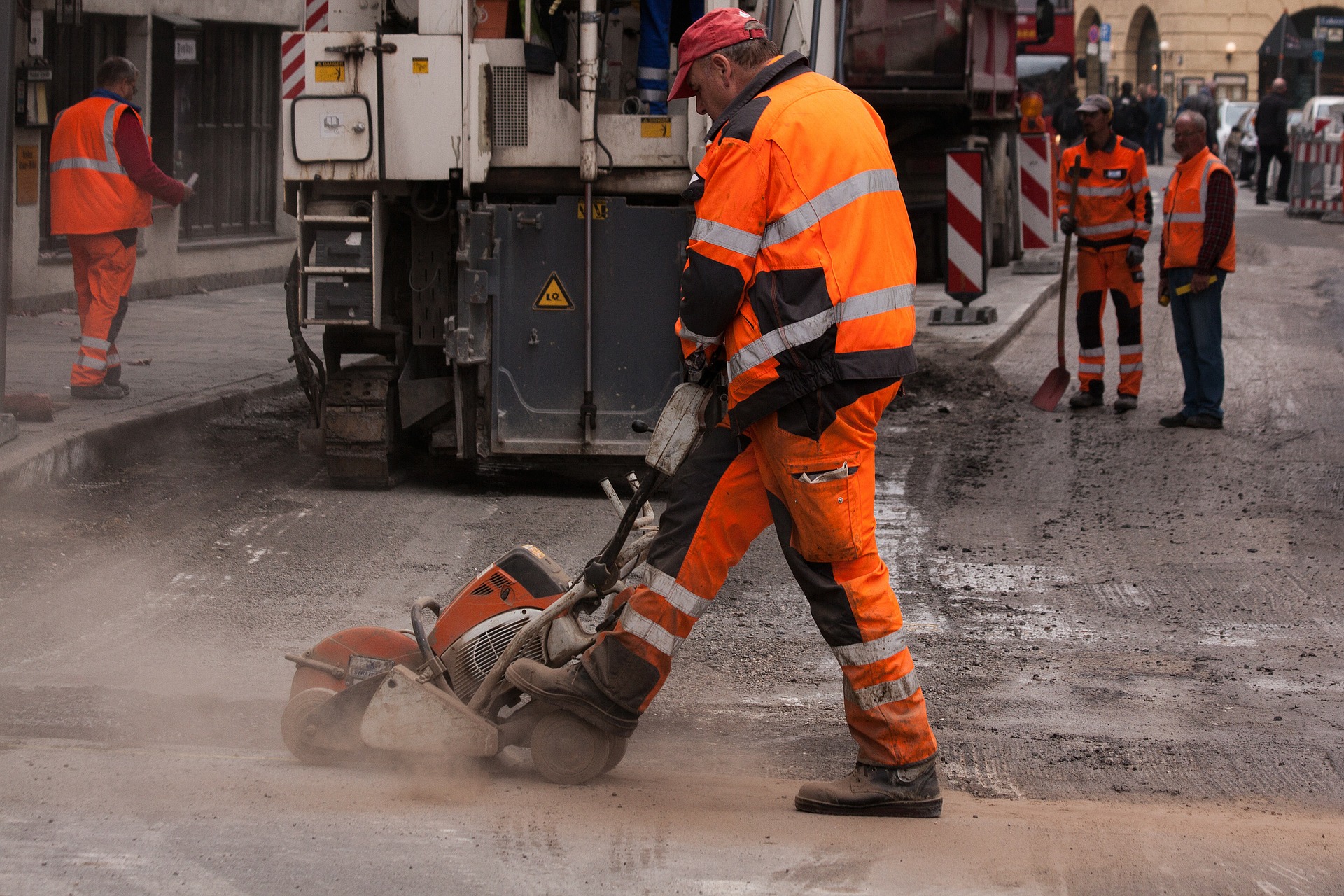
Most people don’t take the consequences of pollution seriously. They don’t understand that not only does it cause harm to the environment, but also to us humans as well. Air pollution, for that matter, causes 4.2 million deaths every year, according to the World Health Organization. This is because almost 91% of the world’s population lives in countries where air quality exceeds the guideline limits set by WHO.
How is air pollution measured by country?
There are several ways, but the key indicator is called “PM 2.5”. The “PM” stands for particulate matter while the” 2.5″ is the 2.5 microns in diameter or smaller. This is one of the most harmful classes of airborne pollutants. According to Lydia Ramsey of Business Insider, PM 2.5 “is especially dangerous because it can get lodged in the lungs and cause long-term health problems like asthma and chronic lung disease.”
WHO recommends that a country should keep its PM 2.5 levels below 10 micrograms per cubic meter. If the levels go above 35 micrograms per cubic meter, this is considered a potential major health problem.
Thus, many countries and cities are looking for green alternatives to prevent further harm to the environment. They are doing their best to have lesser industrial coal production and more solar and wind energy. However, some cities are still reaping the profits from burning coal in factories and to produce energy.
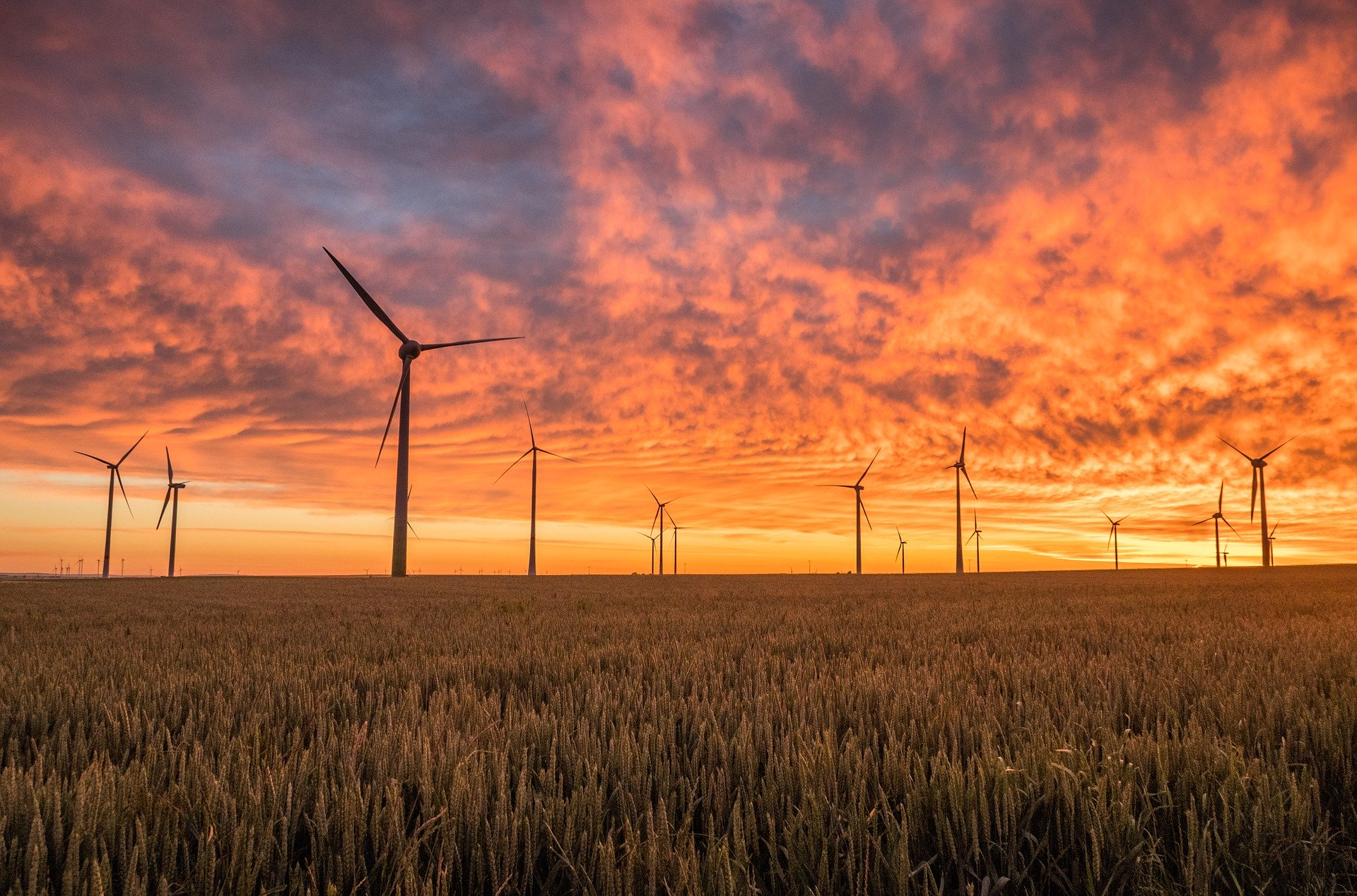
Pollution Index
Here is a list of some of the countries with the least air pollution based on their rankings in 2020 on the Pollution Index:

Finland
This country has consistently been one of the countries with the least air pollution. This is because of the environmental protections that it has taken. Finnish authorities have had a strict policy on providing the best public transport. They have invested in their green initiatives, and the positive effects of this decision has led to many citizens having less need to get their own vehicles. Unfortunately, behind the scenes, brand new coal fired power plants are opening up.
Iceland
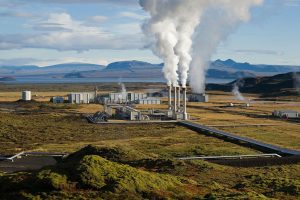
Iceland also ranks in the top five countries for having the least PM 2.5 levels. This is because they have wisely been using eco-friendly geothermal energy. This has been powering the country’s heating and electricity.
Sweden
The capital of Sweden, which is Stockholm, is considered the cleanest capital in the world and was named the first European Green Capital in 2010. It has curbed CO2 emissions by a quarter since the 1990s, which means that it is surely deserving of its title. The Swedish authorities also hope to make the country fossil-fuel free by 2040.
Norway
Oslo, the capital of Norway, is the more recent capital that has been crowned the European Green Capital in 2019. It is known as a world leader when it comes to its sustainable public transport system. This is because it runs completely on renewable energy.
Most countries should learn from these places because if we leave things as they are today, more and more people will suffer from air pollution, not to mention that it is taking a substantial toll on the environment.
The Evolution of Pollution
Most industrious processes used to generate tons of pollution. The countries that claim to have a majority of green power consumption used to be large contributors to global pollution. As we design better technology like wind, solar and water energy, we must consider that countries that are now entering their industrious years will continue to generate lots of pollution. It takes a lot of money and a lot of time to understand the negative effects pollution has.
Countries that are now emitting less pollution should not blame those countries that are growing and producing rapidly for the pollution they emit. Instead we should globally share the green technology that might be expensive, but can replace the processes that produce so much pollution. While it is costly, it is the only way that our ozone layer will be repaired, and the only way for us to minimize global warming.
In the end our demand is what creates a polluted world. We earn more money, and we spend it on air travel, large vehicles, plastic, and whatever else we want. It can be very difficult not to keep that Air Conditioner on because it probably won’t affect us in this life time. Our children’s children are the victims of our crimes on the environment.
Improve Your Breathing By Spending More than 12 hours a Day in a Filtered Area

Indoor air quality is such an essential part of our everyday lives, even though some might not know it. Believe it or not, you can be exposed to air pollutants inside of your homes. The worst thing about this is that you can be completely unaware.
What are some examples of indoor air pollution?
One of the most common indoor air pollutants is dust. Inhaling dust can trigger allergic reactions. No one wants the air that they breathe to be dirty. Another is old or new paint. Paint actually contains VOCs or volatile organic compounds, and if it is in high concentrations, it could lead to various health problems.
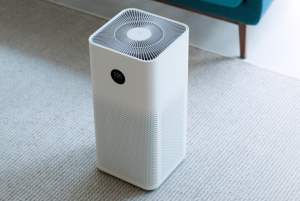
There are also household cleaners and disinfectants that may cause harmful effects. By scrubbing them on any surface, they will interact with the air that you breathe and form VOCs. Another air pollutant is mold. Mold grows in humid places and can cause fevers, sneezing, and headaches, among other things. The bottom line is that all of these indoor air pollutants won’t do any good to your lungs and health.
How will a purifier help?
Some devices can help eliminate these indoor air pollutants. Air purifiers are devices that remove contaminants from the air and thus improve your Indoor Air Quality.

The filters in air purifiers have large HEPA filters which remove as many contaminants as possible. It is ideal to have a purifier that filters all the air in your space a few times every day.
It is also very good to have an air purifier running while you sleep at night. In the end we spend most of our time indoors, so making sure that the air you breathe while inside will really help your lungs to clear our and for you to recover from the dust and chemicals you’ve breathed outside.
The Benefits of HEPA filters
You should make use of purifiers with HEPA filters. These are high-quality filters that remove at least 99.97% of PM2.5 particles. These are common in most air purification systems. They are very beneficial to

your homes and offices because they can filter out the smallest particles, resulting in the best indoor air quality. You need to keep in mind that your indoor air space could contain a lot of harmful microorganisms that are not seen with the naked eye. That is why, with HEPA filters, you can breathe easily, and you and your family’s health won’t be at risk.
Humans take around 600 to 840 per hour on average. Can you imagine the positive impact that it will have on your lungs if you are in a filtered space for 12 hours? You would then be inhaling the best indoor quality air for 7,200 to 10,080 breaths.
Thus, there is no reason for you to hesitate in buying your own purifier. There’s the Xiaomi 3 Purifier that is affordable and contains a HEPA filter. You can also opt for a DIY solution of getting your hands on a high quality HEPA filter and the taping it to a fan. As the air is pulled or pushed through the fan it is filtered. Now is the time to improve your indoor air quality by filtering out these harmful particles that can damage your lungs.
To find out more about keeping the air quality super high in your indoor area, see how we do just that here: https://www.arymask.com/making-indoor-air-clean/
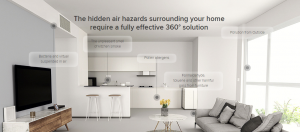
If you want to boost your indoor air quality with a great selection of plants, check out this article.
Sources:
THOUSANDS NOW WEAR pollution masks who thought they never would
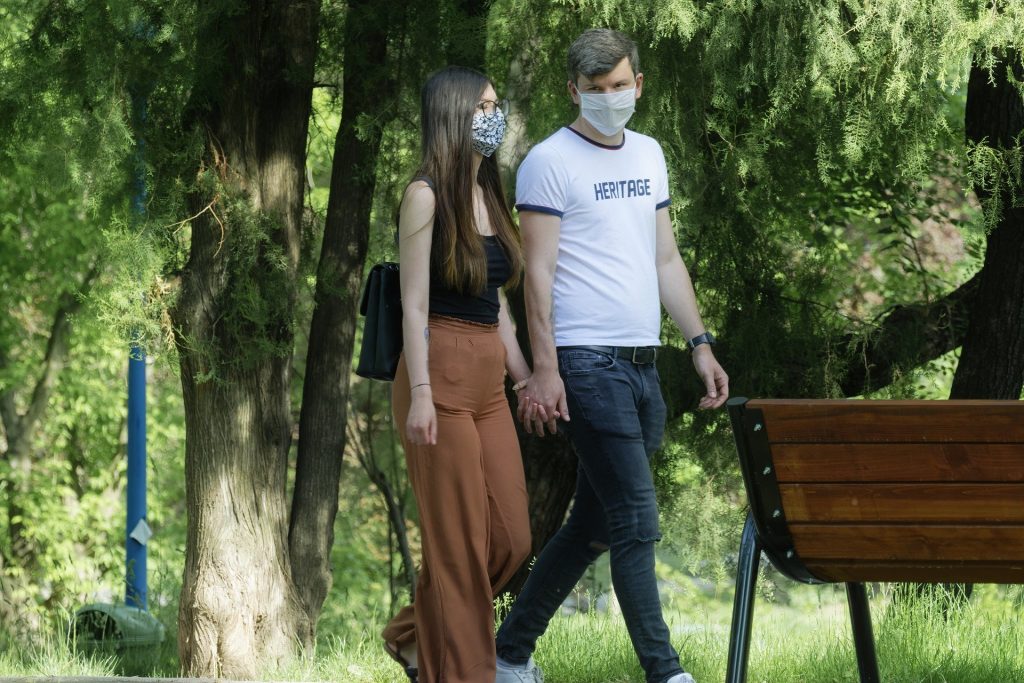
Why people are used to wearing pollution masks in Asia or in big cities
Asian residents are very used to the habit of putting on their pollution masks as they leave the door. For many European, African, South American and American residents it’s definitely not. People see masks as an extra unnecessary accessory that they don’t need. They only recently have started to realize the benefits of masks. A virus spreading at impossible rates is the reason that people now try to protect themselves.
Why though, do so many people in Asia naturally wear masks? Well it could be because they don’t want to get other people sick when they are sick. It could also be because they want their physical traits to be private. It is definitely also because pollution is rife and people want to protect their lungs. In todays day and age, using a mask as a physical barrier that prevents other people from catching your cold or infection shows us who is empathetic. Taoism is a belief across many parts of Asia which has cultural influence on people’s decisions. The beliefs of Traditional Chinese Medicine like in the use of herbs also has the concept of making sure that our lungs are healthy. Exposing oneself to bad air can be detrimental, relating to a concept called qi, which in Chinese means atmosphere. People who are Taoist strongly believe that if the qi within our bodies is not clean, pain and disease are more likely to hit them. One way to ensure a healthy qi is through clean breathing and covering the face to protect the lungs
Industrialization causes high air pollution levels, and natural disasters have made the production and purchase of facemasks very common. Because people are so interested in protecting their health, many fashionable designs, comfortable, cheap and expensive masks have become available to the people of Asia. Sometimes people go as far as to wear masks so that they don’t have to be social. Not having to show anger or smile can make people more comfortable when they are surrounded by people.

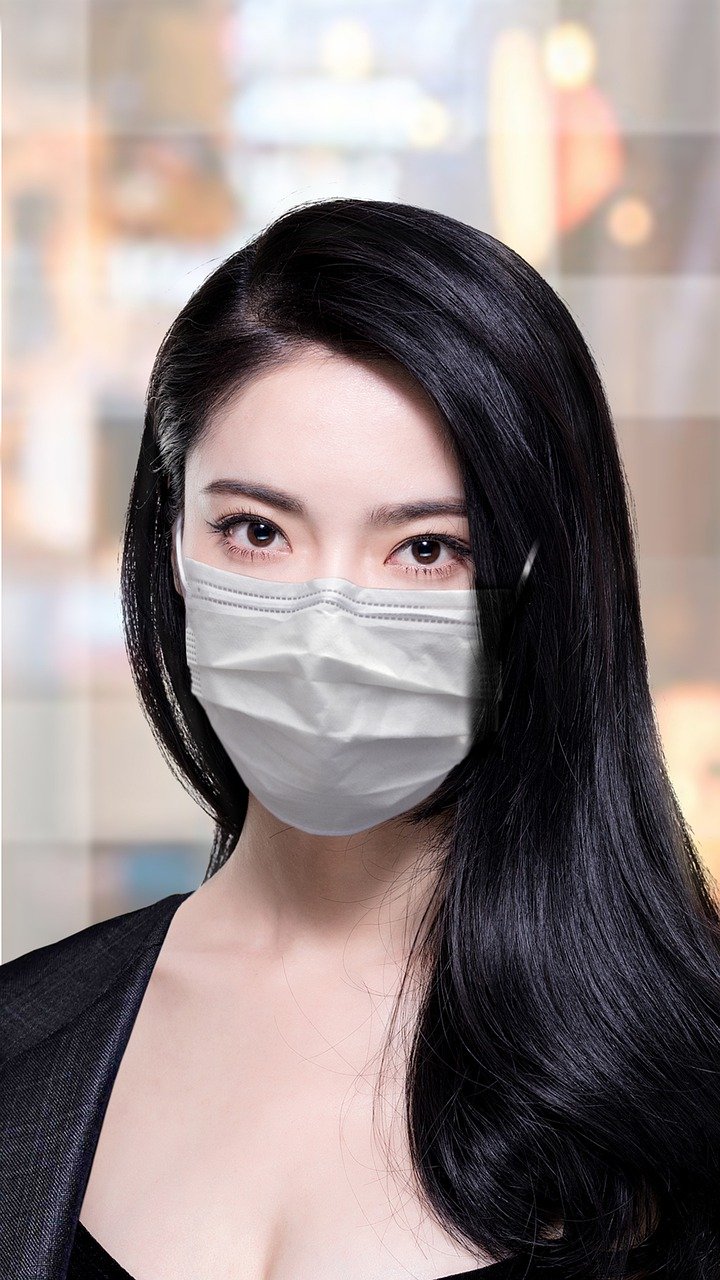
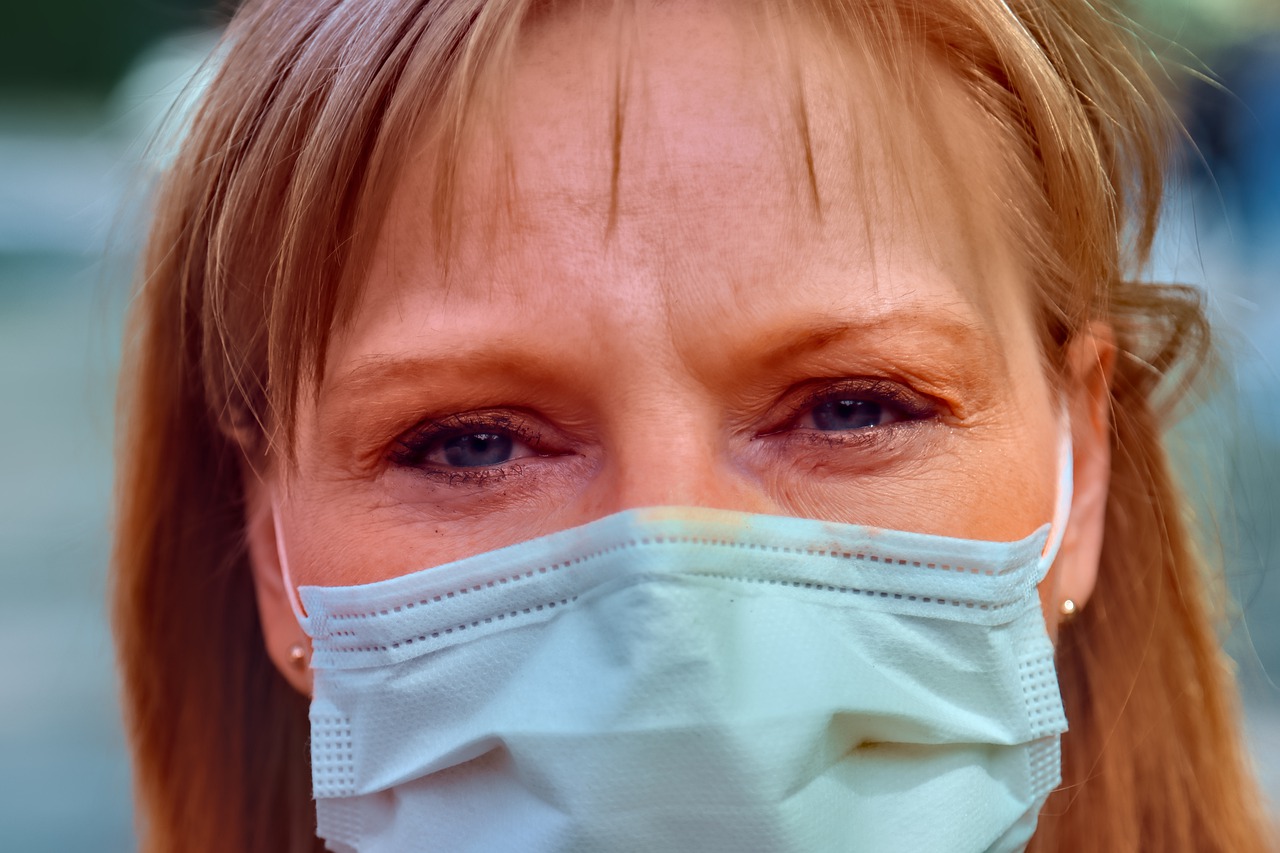
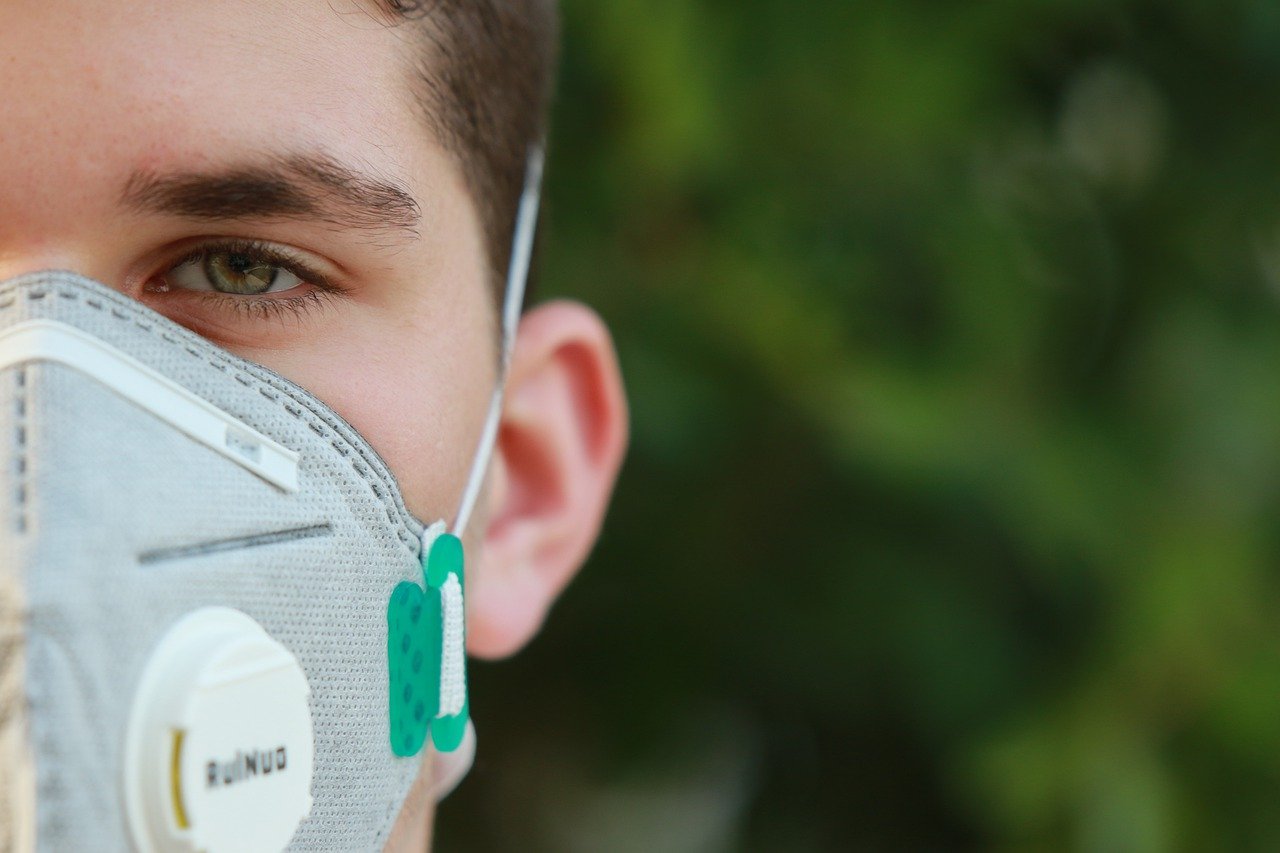
Why many countries haven’t adopted pollution masks
There are many why people may not buy a mask of any type. Some people smoke, others don’t think they commute in a polluted place, some drive cars, and others simply find masks uncomfortable. It makes a lot of sense to be against masks, until you experience the benefits for yourself. It has now even become mandatory in many places to wear a mask, enforced with fines.
Now the debate lies in this: If everybody buys a pollution mask, there won’t be enough supply for hard working healthcare professionals to be able to use a mask where they’re most needed. If at first there is enough stock of masks for all the healthcare professionals working where there has been a case of a virus, then the excess should definitely be made available to the general public. The question is if people actually want to buy them or use them. This comes down to how fashionable, required, or comfortable masks are.
In a place where masks were generally unheard of, seeing a person wearing a mask might make others scared. They are simply not used to it and want to stay away from those with masks thinking that there’s a reason why they have a mask on. The reasoning though is very clear. Protect others from your exhausted breath, droplets, a virus or a cold. Protect yourself against small particles, pollution, and other peoples’ illnesses.
In many western nations, we understand the use of a HEPA filtered vacuum machine, wearing cup masks while doing construction or being in any type of industrial job. This has not yet crossed over to people welcoming daily use of masks in any situation, but with a virus being out of control, it is only obvious that the best way to prevent sickness is social distancing and respiratory protection.
Why masks can be useful (viruses, flu, sickness, etc.)
People might feel ashamed to wear a mask, but now that’s not necessary anymore. We can start to accept the nature of wanting to protect our respiratory tracts. Whether it’s while mowing the lawn, or being in a busy airplane, why not protect yourself? Especially knowing that people around you might be sick, or that you might get others sick. From the view of a doctor, masks are a secure barrier that will help flatten the quickly rising curve of a virus. Everyone should have access to some sort of respiratory protection if they are in a public place where they have to be near other people.
Even though the WHO still recommends that masks should be reserved for healthcare, or for those people who are actually sick, coughing, sneezing, or caring for those with a virus, those who wear them for protection should also use masks correctly. First, of course, it is important to wash our hands as frequently as possible. Disposable masks used in high risk areas should be disposed of properly. The outside of a mask could be contaminated, so not touching the outside of a mask, or taking it off from the back straps and then washing hands immediately after removing is the best way forward.
Facemasks can and will save lives. We now need them in our lives more than ever. The ratings though are extremely important. If multiple layers of fabric have a 100% seal around the nose and mouth, they should block a high percentage of viruses and bacteria. Tested masks that are proven to block higher than 99% of particles are best to use. Masks that block as much as possible are FFP2, N99 or better. These masks are tested and certified to remove smaller than PM2.5 particles which includes most viruses and bacteria.
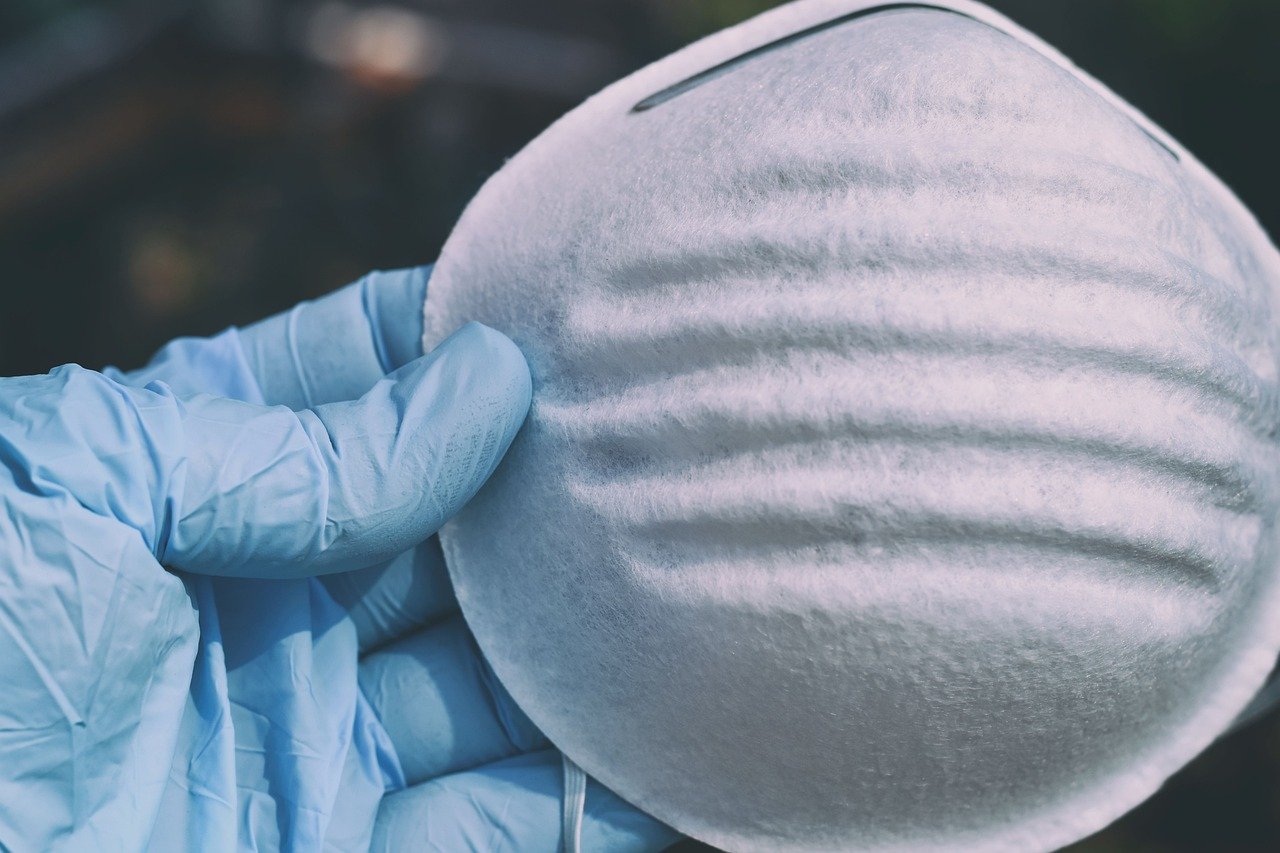
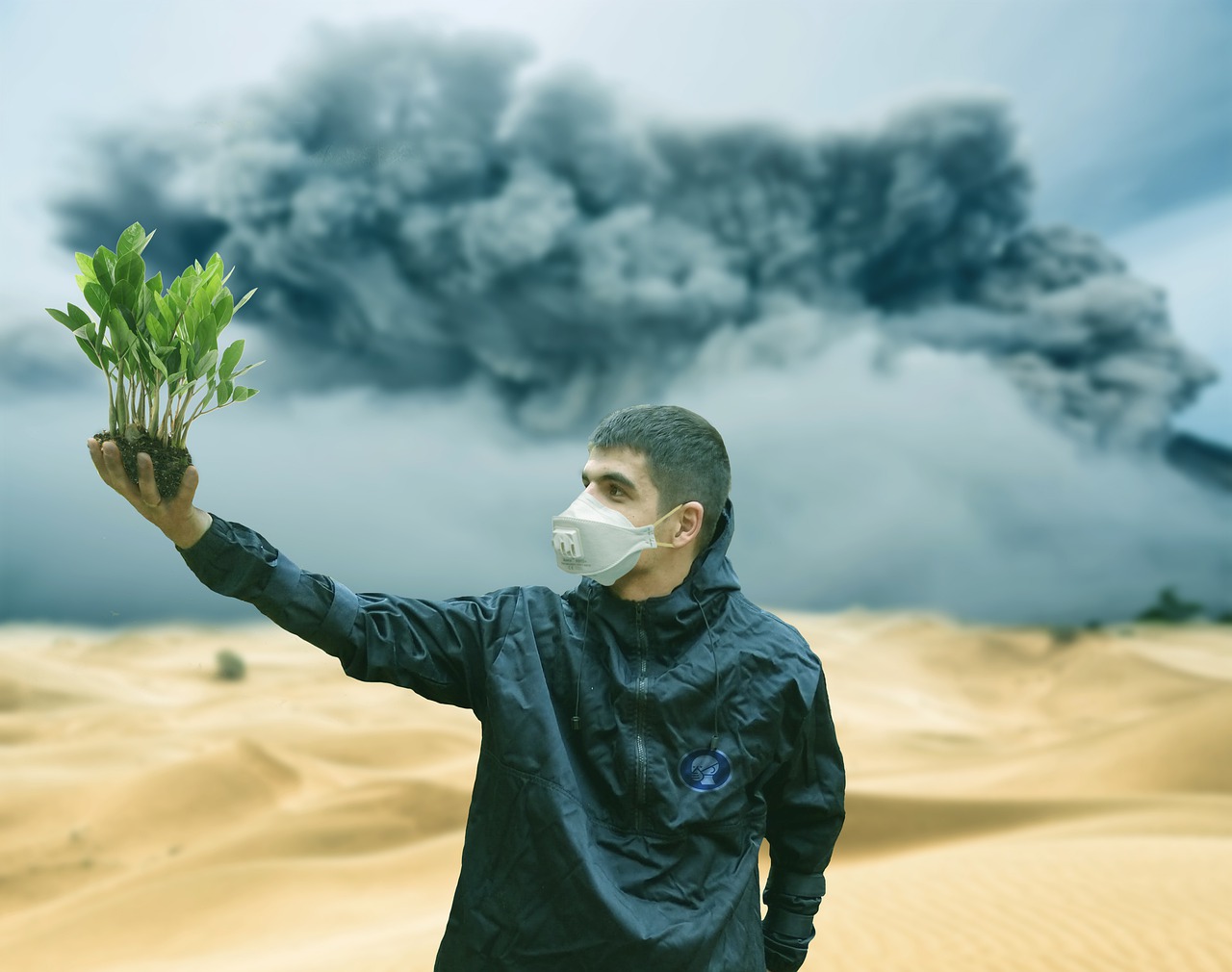
Pollution
People are learning how many deaths pollution causes each year. Damage to the lungs at early ages or in later stages of life has been proven to be detrimental to our health. Many people are now starting to see the benefits of masks. They are understanding that the PM2.5 particles they breathe in from traffic, construction or even fine floating dust can make it difficult to breathe. Congested lungs and catching a cold or virus are now easier to prevent than ever. It is not only the exhaust fumes coming from vehicles you’re commuting around that are bad for you, but also the trash fires burning, the dust from construction, and nearby factory emissions. Small particles are often linked to diseases like cancer, as the ultrafine emissions get deep into our lungs. Pollution takes the life out of our lungs and hearts, which can be harmful for us in the long term.
How to Make Sure You Get a Comfortable Mask!
A key factor to actually wearing a mask is comfortability. If a mask isn’t easy to put on, annoys you, or doesn’t look good, you probably aren’t going to put it on. Even for those on a bicycle or motorcycle commuting through heavy traffic twice a day and often getting caught in rush hour, a habit to grab that mask and throw it on takes about a week to catch on. A lot of people may not know how comfortable a mask can be because they’ve only ever tried the surgical or industrial masks. There are other masks out there used while exercising and our main reason to start AryMask was that there were no comfortable masks. Especially for those of us using masks in hot and humid climates or during exercise. That is why we suggest our Air Mesh model in the single strap style or the dual strap style if you want a more adjustable and upward pulling fit.
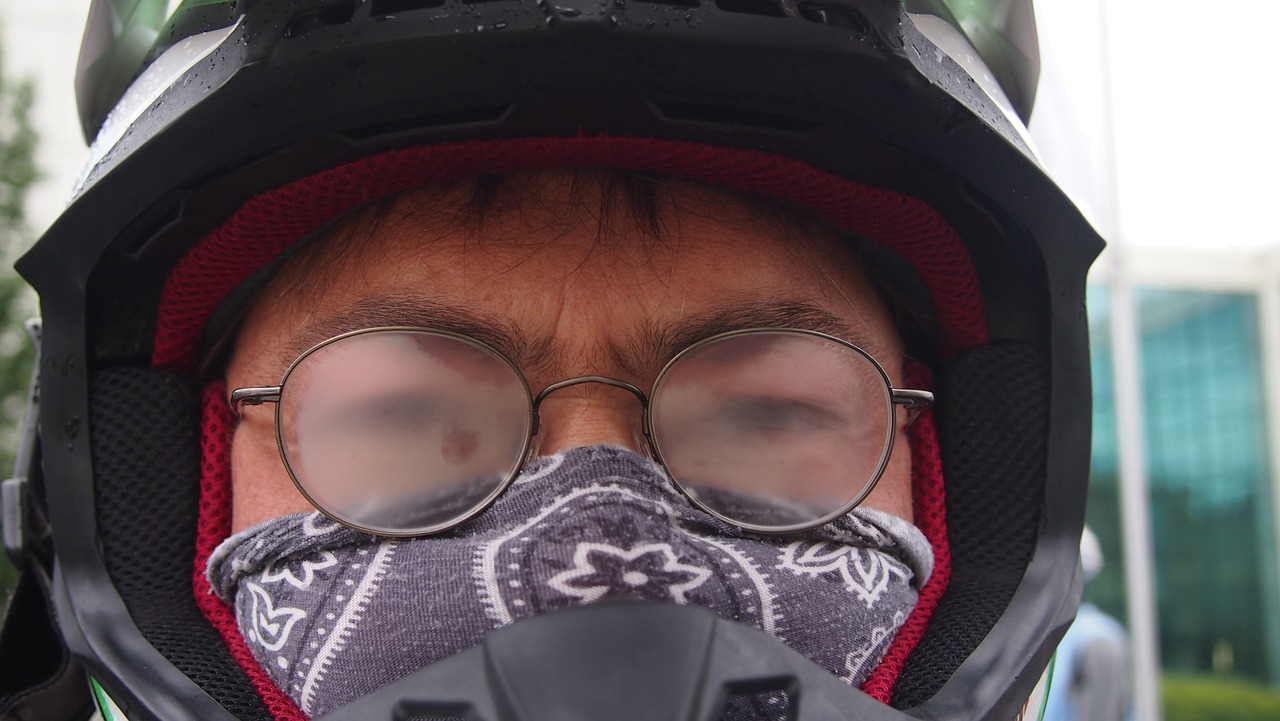
The Rush Hour Effect and the Worst Times to be Out on the Street
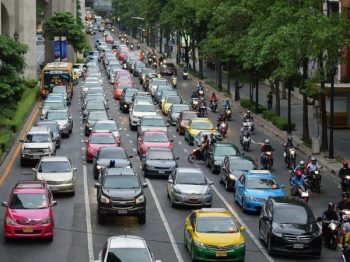
Rush hour - we’ve all heard of this phrase and perhaps we do every day. Indeed, it’s something that a lot of us avoid and that’s mostly so that we don’t end up late to work, school, or appointments.
Most of the times, it’s usually “Leave the house early so you don’t get stuck at rush hour,” or “Let’s leave for the mall after rush hour so we won’t be late.”
Indeed, rush hour is a hassle all over the world and it’s a day-to-day occurrence, especially during the weekdays. Here we outline how rush hour affects our lives.
A Common Problem

On an average, the rush hours all over the world are at 7am - 9am in the morning. This is usually the time where people drive going to work or school. Since most jobs and schools also open at this time, it’s no wonder that there are a lot of vehicles on the streets and roads. For the afternoon, it’s also usually at 3pm - 5pm, a common time work and school also end and where commuters rush to get home or to their after-work or after-school appointments. Traffic is now worse than it's ever been as the number of vehicles on streets at any time has drastically increased over the years.
Almost Everyone Has Cars
One of the biggest contributors to rush hour are personal vehicles. Imagine, there’s a single company with around 100 employees. Let’s say around 80% of those employees have their own vehicles. That’s bound to contribute to the traffic congestion. Let’s take LA for an example, in a 2017 study, it was found that 84% of commuters chose to drive going to work. Your vehicles are costing you more money than you think just sitting around in traffic. The average commuter wastes around 60 liters of fuel a year just sitting in traffic.
The Bigger the City, the Bigger the Congestion
Evidently, the bigger the city, the more businesses, schools, and companies there are. And that means more residents, more commuters, and more traffic congestion during rush hours. Congestion builds through the week from Monday through Friday. Traffic on Thursday is almost as bad as traffic on Friday! The bigger the city, the more traffic there is to get stuck in. In cities of over 1 million people, they spent an average of 71 hours stuck in traffic. These cities also experienced a road network that was congested for approximately 6 hours of the average weekday. According to the INRIX 2018 Global Traffic Scorecard, the top 10 most congested cities in the world are:
- Moscow, Russia – 210 hours lost in congestion
- Istanbul, Turkey – 157 hours
- Bogotá, Colombia – 272 hours
- Mexico City, Mexico – 218 hours
- São Paulo, Brazil – 154 hours
- London, United Kingdom – 227 hours
- Rio de Janeiro, Brazil – 199 hours
- Boston, MA, United States – 164 hours
- Saint Petersburg, Russia – 200 hours
- Rome, Italy – 254 hours
Not Just About Being Late
While we’re mostly concerned about punctuality when it comes to rush hour, there’s also another aspect where it creates a negative affect and that’s our health and the environment’s too. As more cars congest in the streets, the more we exposed we are to pollution from the exhausts that many vehicles emit. Bad driving behavior like driving and braking too fast can cause even more traffic buildup behind you. This is due to chain reactions.
The next time you get into rush hour, don’t just think about your appointment. Think about your respiratory health too! It is best to drive at a steady pace. Try to avoid rush hour by driving at other times, using apps like Waze to avoid traffic, and use public transport as much as you can. Vehicles and sitting in traffic is also very expensive. What are some of your opinions on rush hour?
Our Worst Nightmare
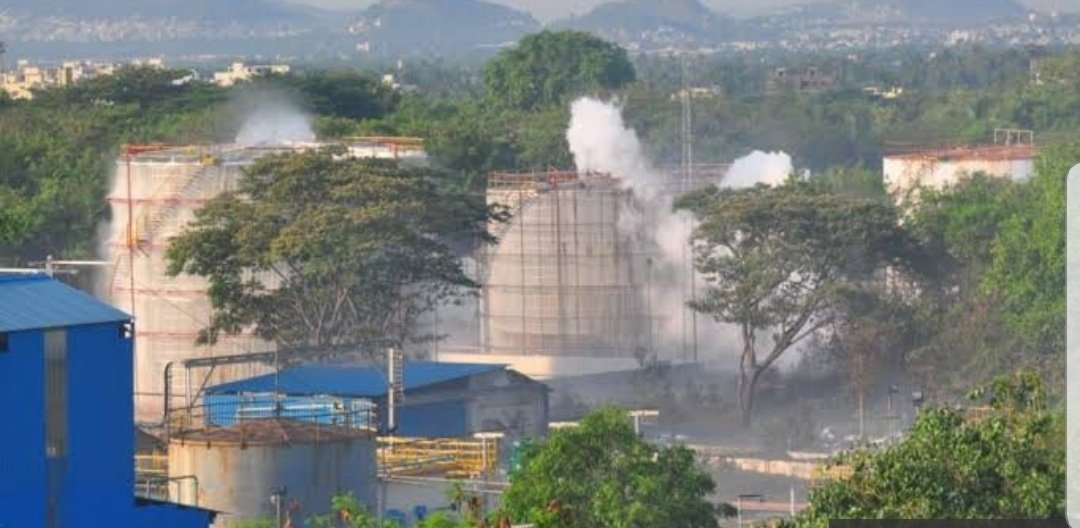
Smelling a faint of gas can be extremely scary. The fear is there because a small spark could ignite the gas. Of course we’re also scared that the gas could be toxic, so we want to know the search. Normally the first thing to do would be to find the source and turn off a main valve that would stop the flow of that gas. Sometimes the transport or storage of gas is extremely dangerous.
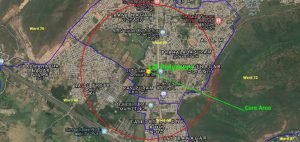
Sadly, a gas leak has just taken place in India killing 11 people and sending many more to hospitals. The number of people admitted to hospitals is between 300-1000 people. Furthermore, 1000 people have been evacuated from the LG Polymer plant in Vepagunta, Visakhapatnam. This is a city on the East coast of India between Kolkata and Chennai. The plant is managed by South Korea based LG Chem, who said that the leak was now contained.
Leaking gas in your area can be dangerous; especially during evening hours when people are asleep. The hospitalized people need oxygenation and fresh air.
“The gas leak situation is now under control and we are exploring all ways to provide speedy treatment for those who suffer from inhaling the leaked gas. We are investigating the extent of damage and exact cause of the leak and deaths,” LG Chem said in a statement reported by India Today.
Primary report is PVC gas (or Styrene) leaked from LG Polymers, Vepagunta near Gopalapatnam in Visakhapatnam at around 2:30 AM today
Because of the leakage of the said compound gas hundreds of people have inhaled it and either fell unconscious or having breathing issues. pic.twitter.com/WeCdrbddV1— Srijana Gummalla (@GummallaSrijana) May 7, 2020
This kind of plant stores gas to make products from polystyrene, a type of plastic. The plastic is used to make cups, cutlery, makeup containers and electric fan blades. Polystyrene burns easily and releases toxic gasses when it does. The gas was simply being stored in a container that caused the contained gas to heat up and turn into a chemical reaction. That’s why the gas leaked.
There were still maintenance workers on site who were most effected. One of the night shift workers reported the leak after discovering it according to The Guardian.
This incident brings back memories of the Bhopal gas leak of 1984 , one of the worst industrial disasters of the 20th century. In that tragedy, thousands of people dies when 30 tons of methyl isocyanate gas were released from a pesticide plant run by Union Carbide. This has caused contaminated groundwater even decades later.
CORE & VULNERABLE AREAS MAP OF PVC GAS LEAKAGE. REQUESTING CITIZENS TO USE WET MASKS OR WET CLOTH TO COVER YOUR NOSE AND MOUTH. pic.twitter.com/7u9U5zDBLN
— Greater Visakhapatnam Municipal Corporation (GVMC) (@GVMC_OFFICIAL) May 7, 2020
400+ Acres Are On Fire in Siberia
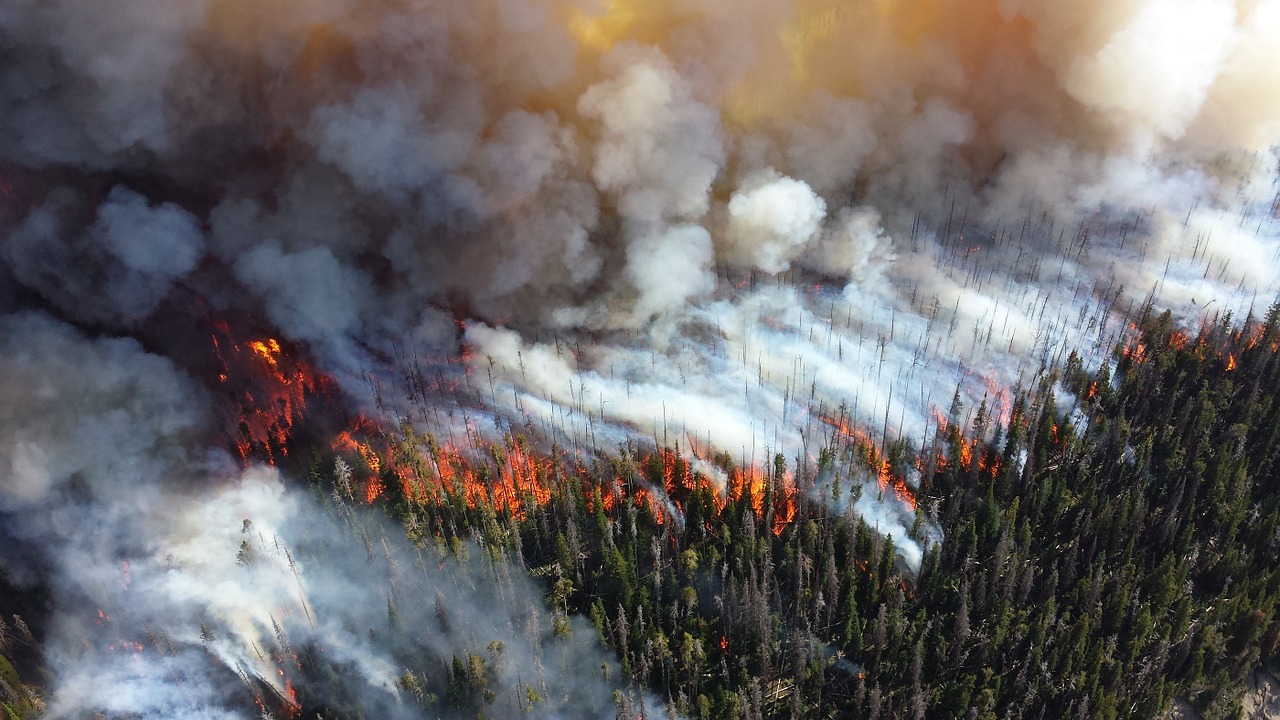
Where is Siberia?
Siberia is a vast Russian province encompassing most of Northern Asia, with terrain spanning tundra, coniferous forest and mountain ranges. The Trans-Baikal region is the hardest hit and remains in emergency mode.
“In total, on April 28th of this year, 3,339 outbreaks were recorded, compared with last year – 1,960”, says Anoprienko. “The area covered by fires since the beginning of the year is 477,000 hectares. Last year, on this day was 382,000 hectares”. These numbers represent as much as 10 times more area damaged by fire in some regions when compared to last year.
Reasons For the Agricultural Fires
“The main reason, of course, is unauthorized and uncontrolled agricultural fires,” says Zinichev. “A less snowy winter, an abnormal winter, and insufficient soil moisture are factors that create the conditions for the transition of landscape fires to settlements.” Fires are started for warmth, to cook, to burn waste, plants, or even for light.
“An abnormally warm winter, an arid spring, and the human factor have made adjustme nts to our forecasts.”
nts to our forecasts.”
Fires pose a threat for “significant damage or even death.” As a result Putin is calling for stricter rules and penalties for those starting the fires.
There are varying causes of fire which have also included unattended campfires.
So far, the fires have affected several areas destroying about 77 houses in their path. Smoke pollution is also an issue, which is so thick in some areas it forced a helicopter using spill buckets out of commission. Resident evacuation was necessary in the hardest hit areas and the fires burn on. 
With winds of up to 80km an hour and temperatures reaching 25C the fires start and spread easily. There are approximately 600 firefighters working to out the fires despite social distancing restrictions.
Sources
https://siberiantimes.com/ecology/others/news/wildfires-critical-in-siberia-and-russian-far-east-up-to-ten-times-worse-than-last-year/
https://www.nasa.gov/image-feature/goddard/2020/wildfires-in-siberia-bring-more-challenges-to-locked-down-area
10 Things a City Can Do To Reduce Air Pollution

Improving the Air Levels of Cities with These 10 Things
In our environment today, breathing fresh air seems to be impossible. The air quality that we have now is slowly becoming a threat to public health, especially in big cities. We encounter a lot of cars roaming around and spreading pollution, and most of these have contributed to the death of 6.1 million people worldwide every year.
There is hope because here are 10 things we can do to improve air levels and encourage others to take charge. Changing how you live can save millions of lives.
#1 Traffic organization reduces congestion
The heavy flow of traffic can produce a lot of pollution in cities especially if cars do not undergo emission testing regularly. City planners should understand how traffic flows, and the areas from which most people are coming and where they are going. Dense residential areas are where people come from to go to work and go to after work. The roads leading to and from these areas will be the most affected by traffic congestion.
In some areas it is really difficult to change the traffic movement through bottlenecks, but there are ways that this can be dealt with. Redirecting traffic through other areas, but also organizing streets so that traffic flows in separate lanes before a bottle neck will help reduce the amount of traffic stuck at a congestion zone. Also, using technology to inform drivers of traffic up ahead can limit traffic. Similar to Google Maps function to see traffic in the path ahead, apps like Waze allow the same location tracking of where devices (and therefore people) are slowing down and then suggests alternative routes for drivers that need to get to the area they’re going to.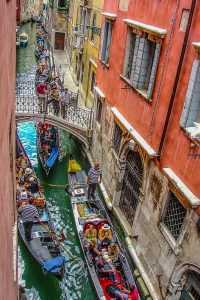
You can encourage your city to come up with a traffic plan. For example, suggesting to lessen the number of cars traveling in specific areas during certain hours is a good way to reduce bottlenecks in traffic.
#2 Public Transport
Instead of taking your own car to work, you can take public transportation. You can help lessen air pollution in the city in your own little way. Public transport promotes less exhaust fumes and more environmentally friendly especially subways and or double-decker buses. When you think about having to wait for your ride all the time, you usually look for an alternative.
Nobody likes to wait. However, in a big city, owning a vehicle and paying for the costs of running and parking one should sway your mind to leave transportation to the city. A city has to try it’s best to add routes for

every residential area, with enough stops and enough rides per hour so that the waiting time for riders is reduced. Subways and undergrounds work efficiently as well, and because the prices are usually subsidized by the city, they become an affordable option for the majority of city residents.
#3 Parks and Trees
Recreational areas are a must for big cities. Not only do people enjoy watching their kids play, but people can also relax under the shade of a big tree. A cities livability rating is determined by how people rate their lives living in that place. Parks allow people to exercise, relax and get fresh air.

The greener in a city, the more people enjoy being outside and enjoying nature. Actually, nature has proven to increase concentration and has lots of other benefits. Plus, a common fact about trees is that they remove carbon dioxide from the atmosphere, leaving us cleaner air to breathe.
#4 Air Management in Construction Zones
As cities grow, construction is imminent. The laws in place to manage pollution from construction are very important because it keeps residents safe. Specks of dust and debris caused by the construction sites in the city can contribute to air, water, noise and PM2.5 pollution. It is recommended for construction sites to install barriers like nets and barriers in place to contain dust within a construction site. Here are some ways that construction sites can reduce their pollution.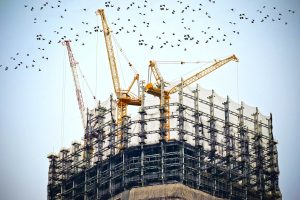
Air
- Never burn waste materials
- Use new machinery or keep diggers, excavators and anything with an engine maintained
- Use low sulfur diesel
- Use particulate filters and catalyst converters
- Use water sprays and sprinklers to control the pollution
- Use ‘on-tool’ extraction that remove exhaust directly where they are produced
- Source local materials
- Use renewable and sustainable materials
- Wear appropriate Personal Protection Equipment
Water
- Monitor and improve disposal of waste
- Keep materials secure so that they don’t go into waterways
- Cover up all drains during construction
- Keep the road and footpath to the site clean at all times
- Properly collect and treat wastewater
Noise
- Use new and quiet tools
- Limit working hours to be sociable as not to disturb residents. Notify them!
- Put acoustic barriers in place
- Ensure equipment is maintained
- Switch off engines when not in use
#5 Industrial Production Limiting
Several power plants within the city can harm people’s health and therefore, should be limited. If not, they should be asked to transfer to locations that are away from the public. These days it is easy to produce electricity with the power of the sun, water or wind. Coal power plants and other high polluting plants should be limited.
#6 Law on vehicles and fuel standards
Coding schemes should be modified to affect a city’s vehicles. his will lessen the volume of vehicles hourly, but also decrease the amount of pollution. Fuel standards are put in place so that vehicles emit less pollution. The age of engines and how they are  maintained is monitored in many cities. Emissions stickers are only given to vehicles in America if the engine passes a yearly test. Many countries are lacking mandatory vehicle testing so this is really important for developing countries. Many developing countries also are not yet adhering to the best fuel standards. This means that there are more pollution emitting particles in the exhaust fumes.
maintained is monitored in many cities. Emissions stickers are only given to vehicles in America if the engine passes a yearly test. Many countries are lacking mandatory vehicle testing so this is really important for developing countries. Many developing countries also are not yet adhering to the best fuel standards. This means that there are more pollution emitting particles in the exhaust fumes.
#7 Large vehicle inspections
Large vehicles are the biggest contributors to black carbon that can be harmful to the public once inhaled. Minimized travel periods of these vehicles and emission testing certificates issued to these vehicles will definitely reduce pollution. Often large vehicles like excavators, tractors or trucks have larger engines which produce more exhausts. For more information on different vehicles and their pollution, see this article [link].
#8 Subsidize Green Energy
A renewable energy source is essential to reducing air pollution. Not having to depend on our fossil fuel energy sources is the way forward. Many countries are now jumping on the clean energy train, setting up solar panels, windmills and building more dams. Unfortunately, there are still plenty of countries running completely on nuclear and coal powered energy plants.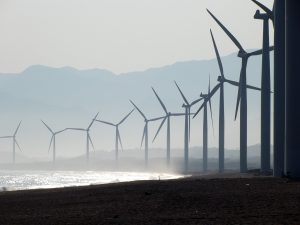
Let’s take a look at Iceland. 87% of it’s energy comes from hydro-power and the other 13% comes from geothermal power. Now Iceland is a small country with a small population but other countries can quickly catch up if they start investing in green energy
Take a look at the Netherlands, with thousands of windmills in the country and off the coast. The government has set up a subsidy for production of renewable energy in 6 different categories: biomass, geothermal, water, wind and sun. As follows, a wonderful example of how individuals can invest in green energy and even make money back from it in the future. They have made it super easy for any resident of The Netherlands to buy a part of a windmill. Once their investment has paid off, they can either use the energy their share produces in their own homes, or they can sell the energy they make.
#9 Trash Collection
Collecting trash should be done on a daily basis. Large numbers of residents who produce more than 1 kilo of trash each per day create a lot of trash. As someone who cares about the environment, you might recycle your trash. Recycling can lessen the amount of pollution caused by biodegradable garbage mixing with other types. The main thing a city can do to reduce trash fires is to collect trash at set times. If there aren’t enough collection trips per area, the trash is left behind.
Large numbers of residents who produce more than 1 kilo of trash each per day create a lot of trash. As someone who cares about the environment, you might recycle your trash. Recycling can lessen the amount of pollution caused by biodegradable garbage mixing with other types. The main thing a city can do to reduce trash fires is to collect trash at set times. If there aren’t enough collection trips per area, the trash is left behind.
n many places the trash is trouble for the residents so they decide to burn it. This is exactly what we don’t want to happen. Collecting trash and bringing it to a sorting center before it goes to a trash dump is  necessary for any country to organize. Hiring private companies that can make money and pay salaries well is key to making sure everything is getting picked up. Additionally, keeping all of the collector’s equipment and vehicles should be maintained to be able keep the correct quota of trash pickups efficient and effective.
necessary for any country to organize. Hiring private companies that can make money and pay salaries well is key to making sure everything is getting picked up. Additionally, keeping all of the collector’s equipment and vehicles should be maintained to be able keep the correct quota of trash pickups efficient and effective.
#10 Ban burning
Waste has chemicals that can pollute the air and suffocates people when burned. Take into account the banning of burning garbage within the city. There are different reasons why people burn things, but the biggest is a lack of education. People don’t have the luck of being brought up in a household that can afford a proper education for their children. When they grow up, they continue their bad habits like disposing of trash on the street and even burning it to get rid of it.
Some places simply have far too much trash, so they get tired of smelling the vile scent of choking. Sometimes it’s the only solution. That is where laws come in, and together with organized trash collection, burning can be stopped.
The burning of stubble to quickly prepare for a new crop season is another reason smoke fills city surroundings. These tactics of burning to increase the quality of soil can easily be changed by using the material that is normally burnt could be tilled. It can effectively be mixed back into the soil to reap the same rewards. Simply understanding the science behind how burning can affect us and educating those that don’t yet know is probably the best and only way forward to start making changes.
Conclusion
Start the change within yourself by encouraging and influencing others to do the same things as well. Help your city become less polluted for the better good of the community and for our future generations to enjoy. With these 10 tips for city standards and adjustments, our lives can improve. It will take hard work, a lot of planning, and policies for us to live in a paradise with no pollution, but we have to start somewhere!
How I Improved My Breathing In One Week (Outdoors Pt. 2)
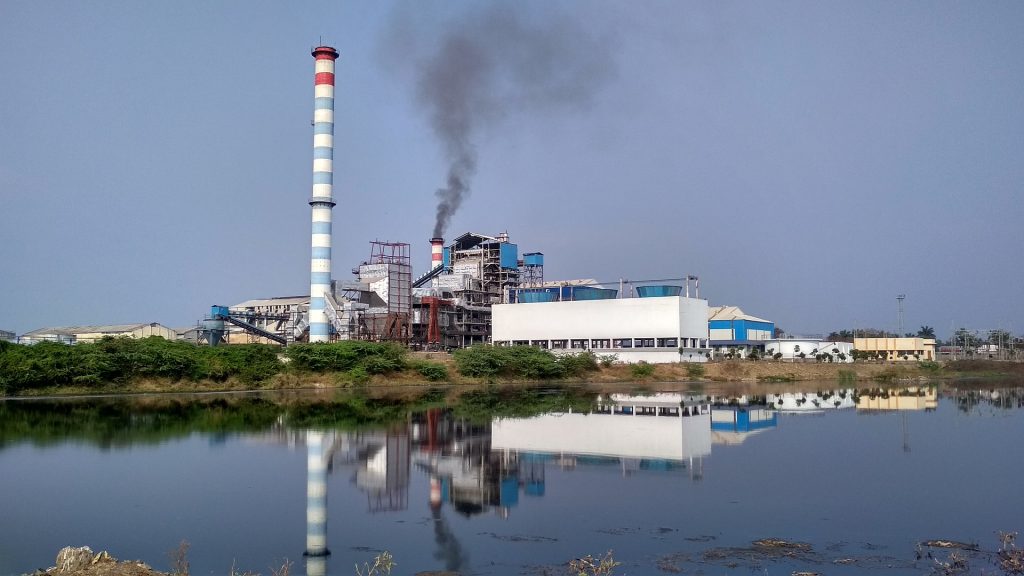
Outdoor Air Pollution
Prevention
Check before you go out. Outdoors, avoid high density zones of air pollution. You can look up PM2.5 readings in certain areas using websites like aqicn.org or airvisual. To protect yourself against outdoor air pollution, it is most important to filter the air you breathe. Especially people with weaker immune systems need to be wary of what type of air they’re breathing.
Around 55% of our global population lives in urban areas. This means that we are often surrounded by less green, more construction, and more accelerating vehicles. Most of the time pollution is generated by numerous sources in various areas. Industrial factories, construction zones, and polluting vehicles all generate poor air quality. Fire zones are more likely to have poor air.  The zone usually depends on dryness, but that qualifies where the fires may start. Once a fire has started, the pollution depends on the wind speed and direction. Look at 1 example of how coal plants spread their pollution.
The zone usually depends on dryness, but that qualifies where the fires may start. Once a fire has started, the pollution depends on the wind speed and direction. Look at 1 example of how coal plants spread their pollution.
A shape drawn around the exact location of burning can be drawn to inform people if the particles they breathe in that zone are unusually high.
A fire zone’s danger for our lungs is dependent on what is burning, and how the burning affects the surrounding area.
Dense areas (which cause traffic jams and idling)
can also be terrible areas for air pollution.
-
- Intersections
- Cross roads
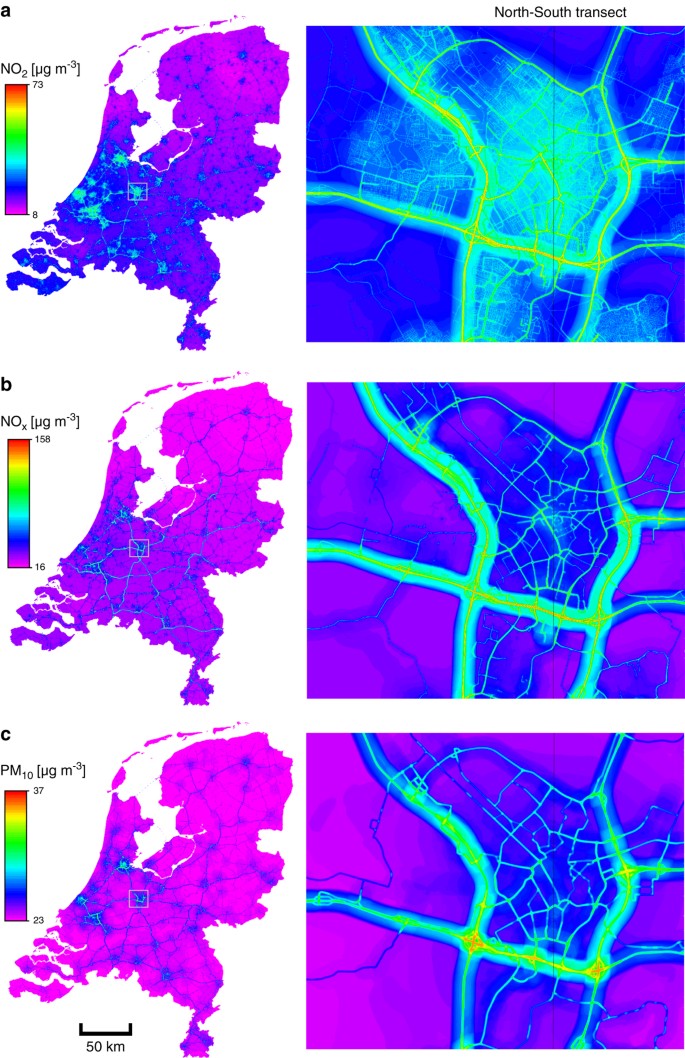
The panels show concentrations for NO2 (a), NOx (b) and PM10 (c). - Near large roads
If you live near any of the above you might have noticed that opening your windows doesn’t get you much fresh air. Instead you see your levels rising because of the idling or accelerating vehicles. Having a purifier, keeping it on, and keeping windows closed during rush hours will be your best
- Construction zones
- Industrial zones where factories and other pollution generators are located
Different types of materials burning can be worse for you:
- Plastic
- Wood or Flora and Fauna, also can be a source of heat
- Waste (a mix of everything we throw away)
- Chemicals like Plastic and Rubber
- PETE or PET
- HDPE
- BOA
- Phthalates
- Persistent organic pollutants
- Oil
- Toxic metals
- MISC (polycarbonate, polylactide, acrylic, acrylonitrile butadiene, styrene, fiberglass, and nylon)
Types of Pollution
- Gasses
- Carbon Dioxide
- Combustion
- Vapor
Color of Pollutants
White smoke = wet, moisture
Gray smoke = wood or light plastics
Brown smoke = wood
Black smoke = heavy fuels (petroleum based: plastics, rubber, chemicals)
Blue smoke = oil from old vehicles
Wind Movement
Horizontal or Vertical movement of wind carrying pollution.
- Atmospheric pressure. As heat is created on the earth’s surface during the day, the air expands and rises.
- Transport winds moves smoke quickly away from the source. Dispersion levels can differ depending on wind
- Low dispersion usually occurs at night when wind is stagnant. This is because the mixing height of air as hot air rises reduces in temperature.
- Measures to prevent burning during hours that have direct effects on large numbers of people can cause drastic pollution levels.
- We predict wind direction and the height of the atmosphere using weather balloons which report back temperature, pressure and GPS coordinates
- Places have high concentrations of particles when they are near traffic lights: where vehicles accelerate the most: traffic lights or busy and dense intersection.
Wearing a Mask

In many polluted places, it is suggested to wear a high quality pollution mask. Masks can be uncomfortable to wear at first, but the benefits of filtering the air you breathe far outweigh the negative effects of PM2.5 particles and gasses entering your lungs. If you’ve ever been on a motorcycle in heavy traffic, you already know what kind of exhaust and dust you can inhale. If you’re used to being in a closed vehicle like a car, a small car purifier might be the option for you. We suggest getting a mask with high quality filters and the ability to reuse the mask instead of disposing the whole mask. This is to reduce waste. Most of our masks have replaceable filters that can be removed and replaced when the filtration material has filled up.
Studies show that Indoor air pollution causes more deaths than outdoor air pollution. We spend most of our time indoors, and many people (especially in developing countries) still cook using open flame coal. However, being careful with the air we breathe and filtering the air that enters our lungs is the main way to prevent air pollution from causing respiratory problems.
Conclusion
Of course, prevention is the key to pollution. Education is the most important thing of all. In many places people simply don’t know the science that explains harming our bodies and atmosphere. The fact that we have come so far, burning almost everything to dispose of it worldwide, is alarming. We need to remember that with every action we take we can either improve our environment or drastically change it for the worse. If you would like to learn how to teach people how to reduce their environment applicable in different cultures, please take a look at this article on what poor people cannot afford to realize.
How do we protect our lungs?
‘So how do we protect your lungs?’
Our filters are produced from the highest quality, highly efficient absorption material with micropore structure, fast resorption, and excellent purification efficiency. The filters are heat resistant, acid resistant, and alkali resistant with no smell.
The adsorption of organic particles is up to ten times higher than general activated carbon. Organic particles in gas, aldehyde, hydroxybenzene, and alkene are filtered because of the structure of the micropores. They also feature excellent adsorption of up to 95% of inorganic gases such as No, No2, So2, H2S, HF, HCL, CO and CO2.
Studies have proven that active carbon filters can remove all forms of pollutants. Multiple materials are required to attract the different molecules within pollutants. That is why active carbon filters have numerous properties. Activated charcoal has millions of pores that create immense surface area to which chemicals can adhere. The negatively charged ions within active carbon work similar to a magnet that attracts the positive ions like PM2.5 particles, heavy metals and other toxins.
To test the filtration efficiency of the filters, our manufacturer used the Automated Filter Tester 8130. This is the same instrument that is used at NIOSH to test the efficiency and penetration of aerosols. The results showed that the active carbon filter filtered 100% of PM10 particles, more than 99% of all PM2.5 particles, and 95% of PM0.3 particles.
Using the Met One Instrument AeroCet 531S, the filters were also tested independently.
The study was conducted from 8AM till 4PM for one day in the city center of Hanoi, VietNam. The laboratory had open windows, and was located on the 4th floor. The different sizes of pollutants in the room were collected simultaneously: PM1, PM2.5, PM7, PM10 and TSP, and were measured before and after the mask was tested. Sample masks and filters were measured for a total of 20 minutes each, and the instrument provided data every 2 minutes.
Results showed that the activate carbon filter has a filter efficiency of up to 99.8%. On average while the mask was fit tested on a subject, the filtration rate of PM2.5 particles was 95%. The gas mask filters filtered out 100% of PM2.5 particles through the microfiber filter and chemical cartridge, while 99.7% of particles were filtered while fitted on a subject.
The temperature was 25°C, and humidity was 89%.
The AEROCET 531S is a full–featured, battery operated, handheld mass monitor or particle counter. It simultaneously measures 6 mass concentration ranges (PM1, PM2.5, PM4, PM7, PM10 and TSP) or five particle count sizes (0.3µm, 0.5µm, 1.0µm, 5.0µm and 10µm).
How I Improved My Breathing In 1 Week (Pt 1-Indoors)
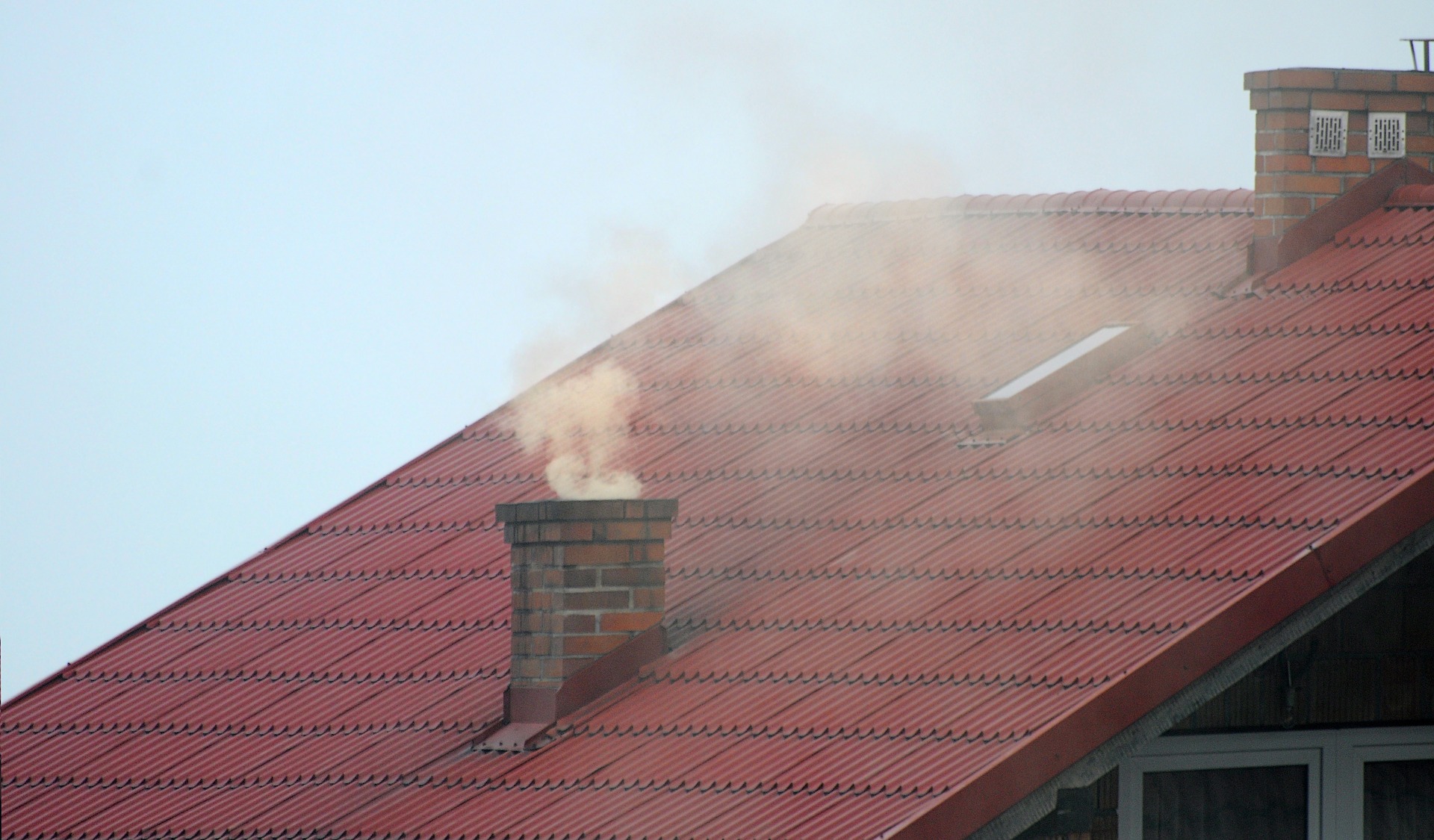
Finding clean air to breathe in polluted cities is possible, but difficult. In this post you’ll learn how to improve your breathing in just 1 week.
It is long known that polluted air harms our lungs, especially those of young children and elder adults. We now know that it can take years off of our lives, so we’re striving to provide options to breathe clean air whenever and wherever we are.
Indoors
At home it is necessary to understand that certain things cause and keep a closed environment polluted.
Make sure your home environment and especially where you sleep has low readings of PM2.5 particles.
- Any form of cooking emissions or smoke that is not removed from your breathing environment at the same time it is generated will cause higher readings of particles. Cooking, dust, and air from outside that enters your home will harm your lungs without you actually noticing it. If you schedule an appointment to fit a mask with us we might be able to organize bringing a PM2.5 reader to your home to measure your indoor air particle levels. If you’d like to purchase a reader or compare different types of readers you can also get in touch with us for the most affordable and high quality readers there are.
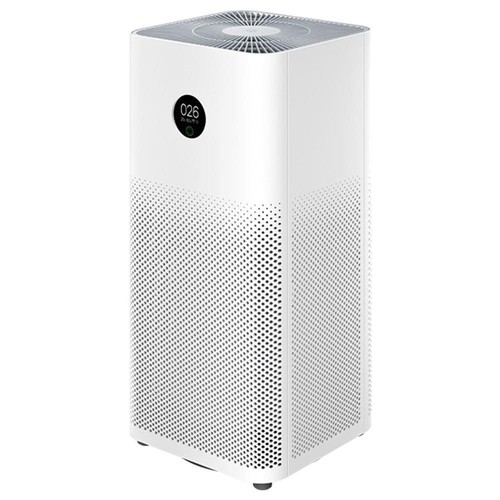 2. Dusting often and vacuuming all the particles inside will help, but a HEPA purifier will help even more. Getting a purifier in your area is getting easier and cheaper. Send us a message and we’ll be sure to refer you to a place that has a showroom or can deliver you a purifier. The more material things you have in your home, the more dust can be collected on those things. Having a minimal home with only the furnishings you need and cleaning your space regularly will give you the best results. A deep clean every month is something you should keep in mind, and when you first move into a place do make sure everything is clean to keep small particle circulation down.
2. Dusting often and vacuuming all the particles inside will help, but a HEPA purifier will help even more. Getting a purifier in your area is getting easier and cheaper. Send us a message and we’ll be sure to refer you to a place that has a showroom or can deliver you a purifier. The more material things you have in your home, the more dust can be collected on those things. Having a minimal home with only the furnishings you need and cleaning your space regularly will give you the best results. A deep clean every month is something you should keep in mind, and when you first move into a place do make sure everything is clean to keep small particle circulation down.
3. Turning on exhaust fans when cooking or producing any form of heating (even candles), will help to clean your indoor environment. We were surprised to read PM2.5 levels of 600 when we visited a customers’ house who had just slightly burnt a pizza in their oven. When we opened the windows and cleared and equalized the air, it slowly went back down to outdoor levels. They didn’t have a purifier however, so we suggest getting one as soon as possible.
Part 2 will cover outdoor air quality.
Here are 6 more tips to keep your indoor environment clean.


